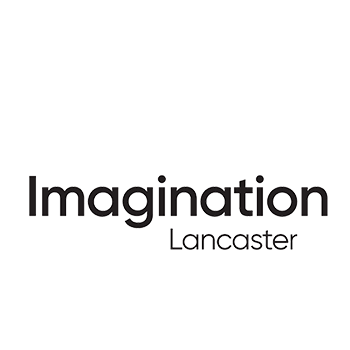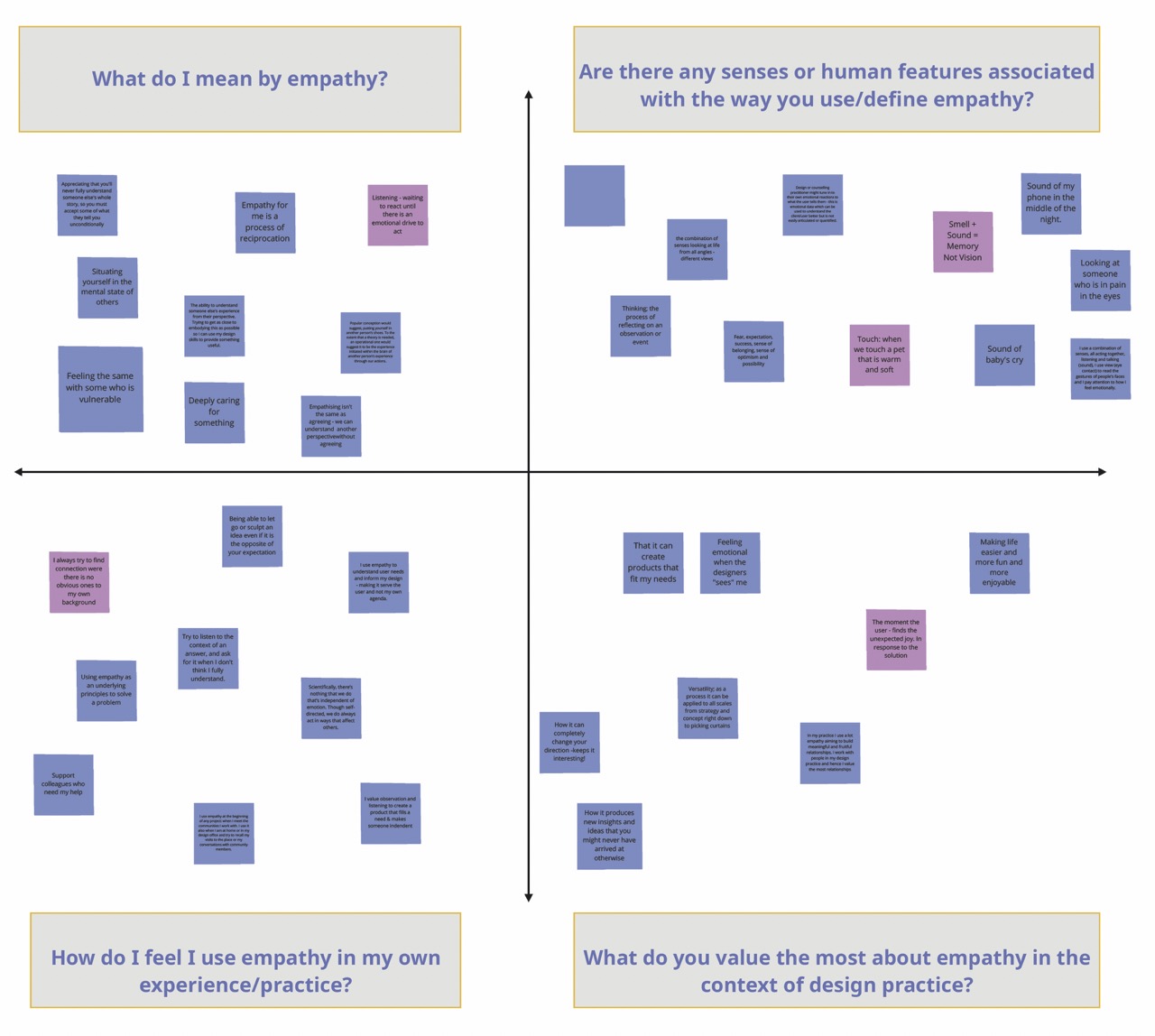On the 29th of June 2021 we ran our first event of the participatory design phase of the feasibility study Embedded Intelligent Empathy in Design, EPSRC – Connected Everything II funded project. The participatory design phase was led by our researcher Dr Mirian Calvo and focused on understanding where the designer’s intuition and experience in using empathy stand in the design process.
The event consisted of an online focus group using simultaneously Microsoft Teams – to host the collective videoconference, and Miro Whiteboard – to support the participants’ collective reflections and to ensure data-collection. The reason for using a focus group lay in the strength of this method to encourage group dynamics. The research team wanted to begin generating group dynamics among the participants and prepare an optimal social context among them before the co-creation workshop (schedule at the end of August 2021). We sought to nurture horizontal and trusted relationships, key aspects in participatory design.
Four participants were drawn from our industrial partners (Vāsthu, Bonnie Binary, HM Land Registry, and BiBO Studio) and four academics from our educational partners. The event’s main focus was to collectively define design empathy and prompt initial collective reflections, approaching perspectives from the common and the diverse, looking for agreements, and reaching consensus. To do that, we structured the event in two activities.
The first one was an icebreaker. Using Miro Whiteboard, we invited each participant to post an image that somehow reminded them to empathy. This allowed the participants to introduce themselves and sparked initial dialogues when presenting the images and texts to the rest of the group. The responses were diverse. Some participants spoke about their motivations for getting involved in the project, e.g., one participant was involved because he was working on robotics. Another participant said:
I want to design intuitive products that respond to people’s needs when they are vulnerable.
The second activity consisted of a collective reflection about the meanings participants had about design empathy, and how they had been using empathy in their own design practices. The activity was structured around four prompt questions that helped them to keep focus on the matter of concern. We invited participants to be playful and keep an open-minded approach to the activity, aiming to bring to the fore their tacit knowledge about their skill on design empathy.
One of the key insights the focus group brought to the fore was the participants’ understanding of design empathy, defined as:
The ability to understand someone else’s experience from their perspective.
This statement highlights the relevance of building mutual understanding when talking about empathy and about sharing a lived experience under a specific perspective or angle. Most of the participants reinforced the link of design empathy with listening, understanding, and asking. One participant said: “I value observation and listening to create a product that fills a need“; another one said: “I use empathy at the beginning of any project, when I meet the communities, I work with. I use it again when I recall my site visits“. Here we can appreciate the use of empathy in design to build bridges and beginning to unpick the communities’ and/or user’s needs and their personal situations.
After these two activities, we ran an informal collective reflection where the participants shared their view that education programmes should emphasise the role of design empathy and teach students to use it in meaningful ways. Also, they mentioned the relevance of using reflection to consciousness-raising of empathic horizons, and that empathy can be learned and cultivated.


